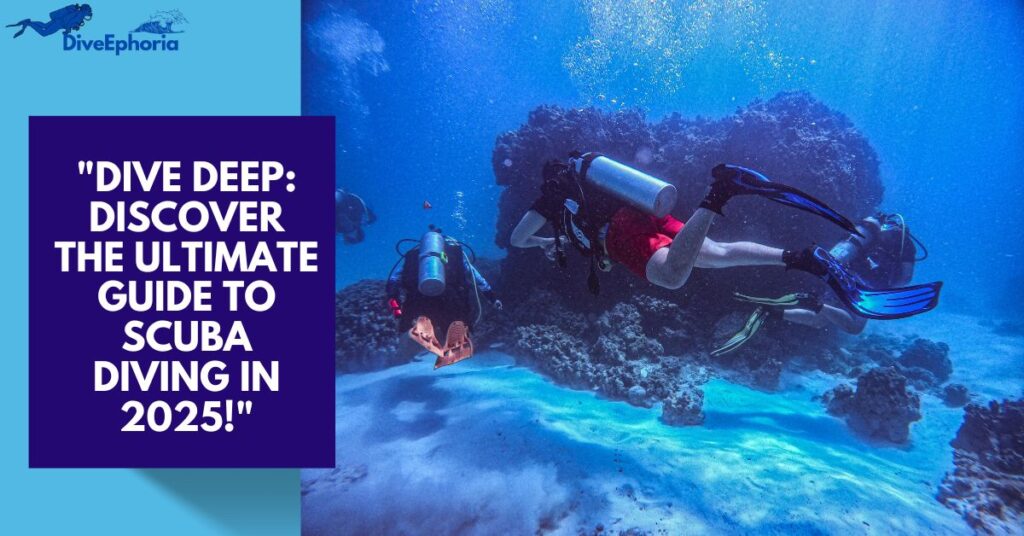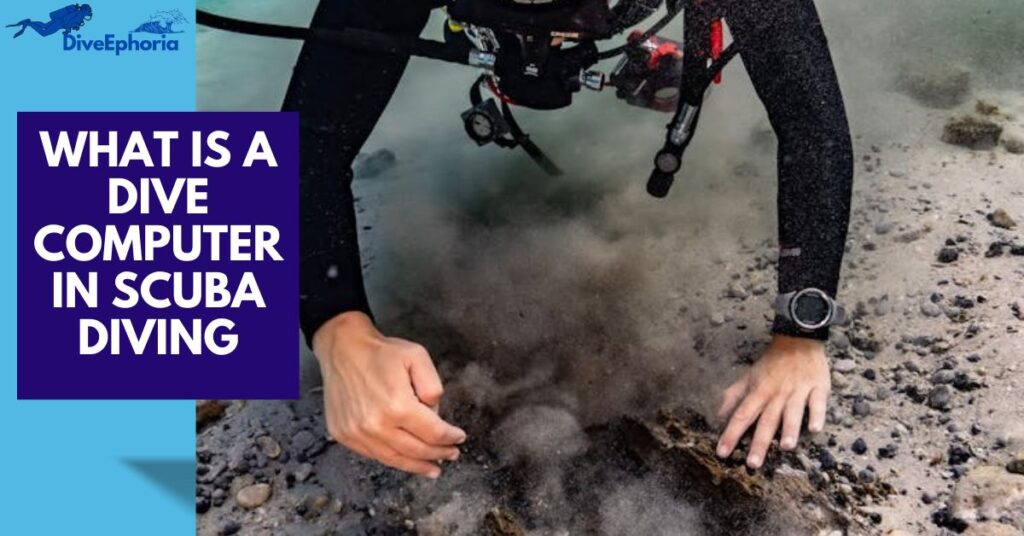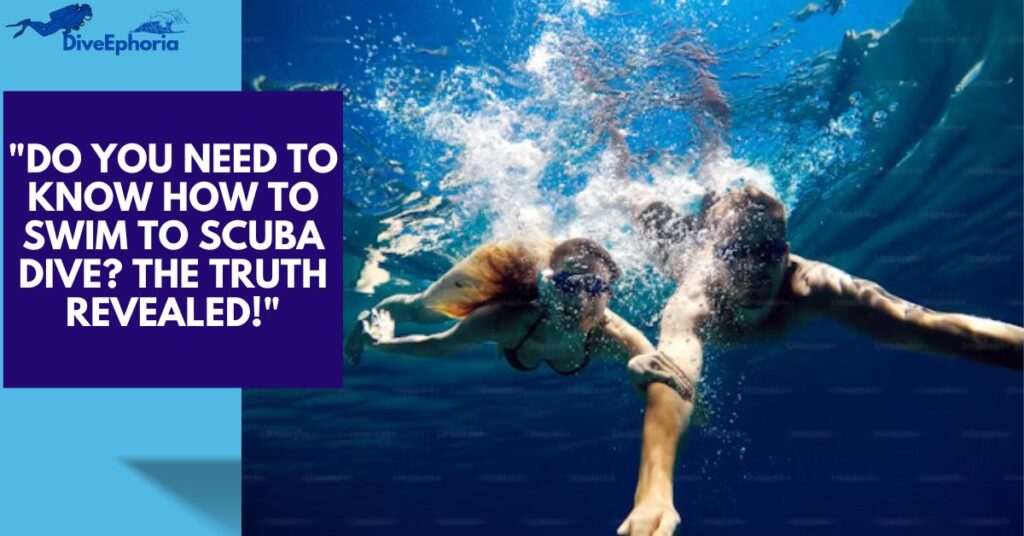
Table of Contents
Introduction
Scuba diving offers an unparalleled opportunity to explore the mysteries of the underwater world, from vibrant coral reefs to diverse marine life. It’s a thrilling and life-changing experience that many dream of, but one common question arises: Do you need to know how to swim to scuba dive? If you’re intrigued by the idea of diving but feel uncertain about your swimming skills, you’re not alone. Many prospective divers share this concern, especially when it comes to diving in open water.
In this comprehensive guide, we’ll dive deep into whether non-swimmers can still enjoy scuba diving, what essential swimming skills are needed, and the steps you can take to prepare yourself for your first dive. Whether you’re a beginner considering your first diving adventure or someone who wants to refine their swimming skills before exploring the depths, we’ve got you covered.
Can You Scuba Dive Without Knowing How to Swim?
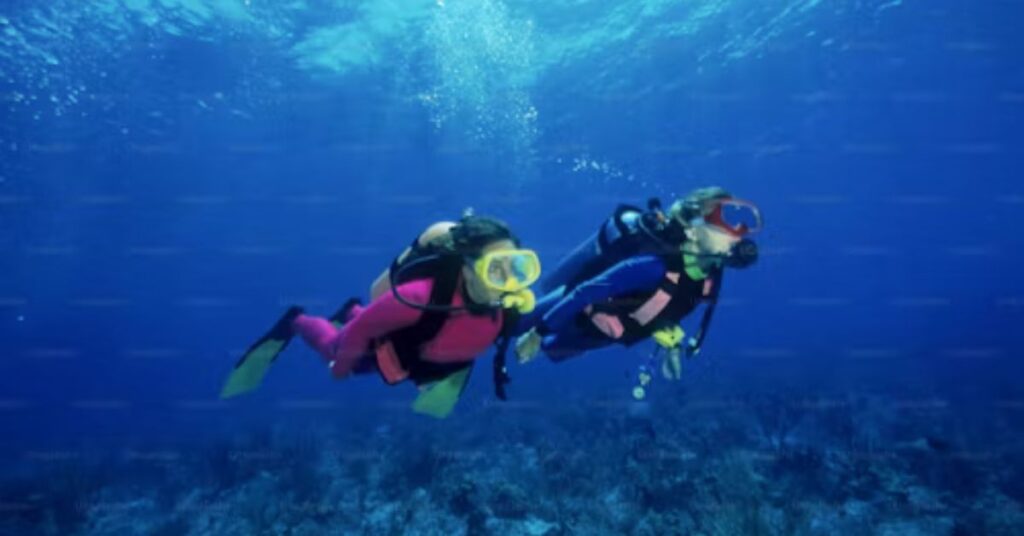
One of the most common concerns for those interested in scuba diving is whether it’s possible to dive without knowing how to swim. The short answer is yes, you can technically try scuba diving even if you’re not a strong swimmer, but there are some important conditions to keep in mind. Scuba diving for non-swimmers is generally safe in specific circumstances, though there are limitations and safety considerations that should be carefully considered before taking the plunge.
Discover Scuba Diving for Non-Swimmers
Many diving organizations, such as PADI (Professional Association of Diving Instructors), offer introductory experiences like the Discover Scuba Diving (DSD) program, which allows non-swimmers to try scuba diving under close supervision in a controlled environment. These programs are designed for beginners who have little to no swimming experience and are ideal for those who are curious about diving but not yet ready to commit to a full certification course.
During a Discover Scuba Diving experience, non-swimmers typically dive in shallow waters, often no deeper than 12 meters (40 feet), where the conditions are calm, and the risk is minimized. You’ll be accompanied by a certified instructor at all times who will guide you through the basic skills, from breathing through the regulator to controlling buoyancy. These controlled environments, usually found in pools or shallow lagoons, allow beginners to experience the thrill of diving without the added pressure of extensive swimming skills.
Why Do Most Diving Programs Require Basic Swimming Skills?
While it’s possible to try scuba diving as a non-swimmer in these controlled conditions, becoming a fully certified diver requires a certain level of swimming proficiency. Certification courses like the PADI Open Water Diver course or the SSI Open Water Diver course have specific requirements that include basic swimming skills to ensure diver safety.
For example, to obtain an Open Water Diver certification, you must demonstrate the ability to swim at least 200 meters (unaided) or 300 meters (with a mask, fins, and snorkel). You will also need to tread water for 10 minutes. These skills are important because, in emergency situations, divers must be able to navigate underwater independently and manage their own safety. Being able to swim, float, and stay calm in water helps divers respond effectively if they need to handle equipment issues, strong currents, or other challenges that may arise during a dive.
Can Non-Swimmers Gain Confidence and Dive Safely?
Yes, non-swimmers can build the necessary water confidence over time. If you’re serious about becoming a certified diver but don’t have strong swimming skills, it’s a good idea to start with swimming lessons before beginning a diving certification course. Gaining comfort in the water and learning basic swimming strokes like the breaststroke or freestyle will help you feel more at ease underwater, which is essential for safe and enjoyable diving.
If you are not comfortable in open water or haven’t mastered swimming, starting with beginner-friendly programs such as Discover Scuba Diving will provide a taste of the sport while minimizing risk. These programs will help you understand how diving works in a relaxed, low-pressure environment, and once you’ve built more confidence and swimming ability, you can proceed to more advanced diving certifications.
Safety Considerations for Non-Swimmers Who Want to Scuba Dive
While it’s possible to scuba dive as a non-swimmer, safety must always be your top priority. Here are some key considerations to ensure that your diving experience is as safe as possible:
- Instructor Supervision: Always dive under the supervision of a qualified instructor, especially if you’re a non-swimmer. They will provide the necessary guidance and safety support.
- Shallow Water Diving: Start in shallow waters where the risk is lower, and where you can stand if needed. This also allows you to gain comfort with the equipment and techniques.
- Breathing Control: One of the most important skills in scuba diving is mastering your breathing. Non-swimmers must learn to stay calm and breathe slowly through the regulator, which will help prevent panic and conserve air.
- Equipment Familiarity: Understanding how your diving gear works is crucial for safety. Be sure you are familiar with the mask, fins, buoyancy control device (BCD), and regulator before heading into the water.
Can You Scuba Dive Without Swimming Skills? The Verdict
While non-swimmers can try scuba diving in shallow, controlled environments like Discover Scuba Diving, being a confident swimmer is necessary for full certification and long-term diving success. Scuba diving is a physically demanding activity that requires a combination of water confidence, buoyancy control, and an understanding of how to move and breathe underwater. If you plan to dive regularly or want to obtain a diving certification, investing time in learning to swim and improving your water skills will ensure a much safer and more enjoyable experience.
Swimming Skills for Scuba Diving: What You Need to Know
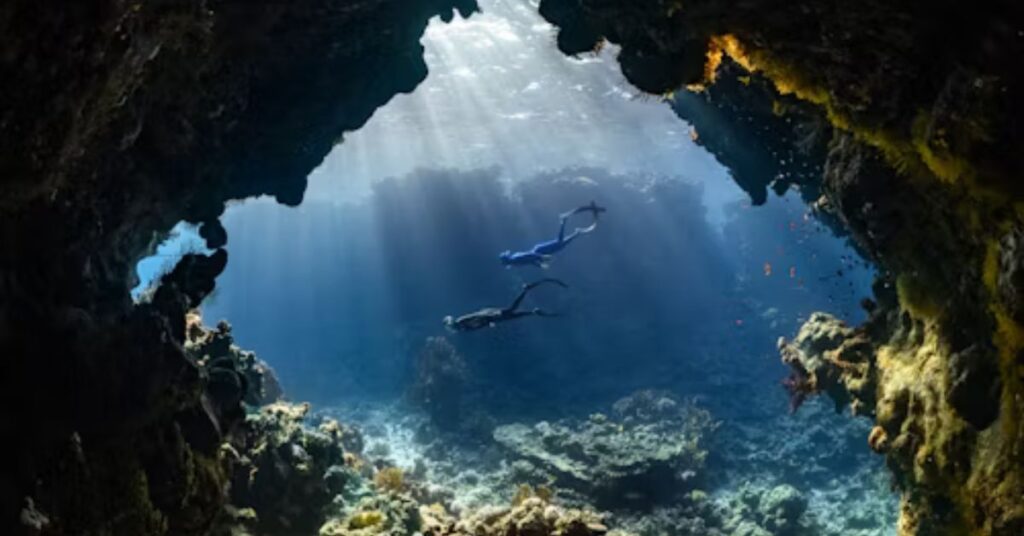
If you’re considering scuba diving, you might wonder exactly what kind of swimming skills are necessary. The good news is that you don’t have to be a professional swimmer to enjoy scuba diving, but having a basic level of swimming ability is incredibly important for your safety, comfort, and overall diving experience.
In this section, we’ll break down the essential swimming skills needed for scuba diving, explain why they matter, and provide helpful tips for beginners who want to build water confidence before their first dive.
Do You Have to Be a Strong Swimmer to Scuba Dive?
No, you do not need to be an elite or competitive swimmer to scuba dive. However, you do need to demonstrate basic water skills. The minimum requirement for most scuba diving certification programs, such as the PADI Open Water Diver course or the SSI Open Water Diver course, typically includes:
- Swimming a distance of 200 meters (without stopping) without any flotation devices, or 300 meters while wearing a mask, fins, and snorkel.
- Treading water or floating for 10 minutes without any assistance.
These skills aren’t about speed or technique but are simply about being comfortable in the water and showing endurance. They prove that you can stay afloat, move through the water, and manage yourself in an open water environment if needed.
Key Swimming Skills Every Beginner Diver Should Practice
If you’re preparing to learn scuba diving, it’s helpful to focus on developing a few basic swimming and water comfort skills:
1. Comfort in Deep Water
Being relaxed in deep water is essential for divers. Many diving locations involve descending into depths where you can’t simply stand up. Practicing floating, treading water, and staying calm without panicking when you can’t touch the bottom will prepare you for these experiences.
2. Basic Swimming Strokes
You don’t need to master advanced techniques, but knowing a few basic strokes can make your diving experience smoother. Focus on:
- Freestyle (front crawl): Useful for moving efficiently at the surface.
- Breaststroke: A slower but controlled swimming style that helps conserve energy.
- Backstroke (optional): Helpful when you need to rest while still moving on the surface.
Good stroke techniques make it easier to get from the boat to the dive site, return to shore, or move during surface swims.
3. Breath Control
Learning to control your breathing is one of the most vital skills for scuba diving. Practice slow, deep breathing in the pool while swimming or floating. This skill helps you stay calm underwater, improves your air consumption, and enhances buoyancy control.
4. Buoyancy and Floating
Buoyancy is a critical element in scuba diving. Learning to float effortlessly without sinking or thrashing around is great preparation for controlling your buoyancy underwater with the help of your buoyancy control device (BCD).
5. Endurance and Confidence
While diving isn’t a fast-paced activity, being able to swim moderate distances without exhaustion is important. Building your endurance ensures that you have the stamina to handle strong currents, surface swims, or emergency situations without panic.
Why Are Swimming Skills Important for Scuba Diving?
Swimming skills directly impact your safety and enjoyment while scuba diving. Here’s why they matter:
- Emergency Situations: If you encounter equipment failure, strong currents, or unexpected obstacles, you need to move confidently through the water.
- Surface Swims: Sometimes dive boats cannot anchor close to dive sites, requiring you to swim on the surface to and from the location.
- Energy Conservation: Efficient swimming techniques help you conserve energy and air, allowing you to dive longer and more comfortably.
- Reduced Anxiety: Knowing you can swim and float without stress significantly reduces fear and anxiety underwater, making the entire experience much more enjoyable.
Tips for Building Swimming Skills Before Your Dive
If you’re new to swimming or not yet confident, don’t worry—skills can be learned with practice! Here are a few tips:
- Take Swimming Lessons: Sign up for a few sessions with a certified swimming instructor who can tailor lessons for scuba diving preparation.
- Practice in a Pool: Regular practice sessions at your local pool can dramatically improve your water comfort and technique.
- Combine Swimming with Snorkeling: Practicing snorkeling builds your breathing skills and helps you get used to wearing a mask and fins, both essential for scuba diving.
- Set Small Goals: Start with short swims and gradually increase the distance and time you spend in the water.
Swimming Skills for Scuba Diving: The Bottom Line
While you don’t need to be a champion swimmer to start scuba diving, basic swimming skills are a fundamental part of safe diving practices. Being comfortable in the water, able to swim moderate distances, and staying calm during emergencies will make your scuba diving experiences safer, more relaxed, and a lot more fun.
If scuba diving is your dream, investing some time now into improving your swimming ability will pay off enormously when you finally dive beneath the waves and explore the beauty of the underwater world.
How to Prepare for Scuba Diving as a Non-Swimmer
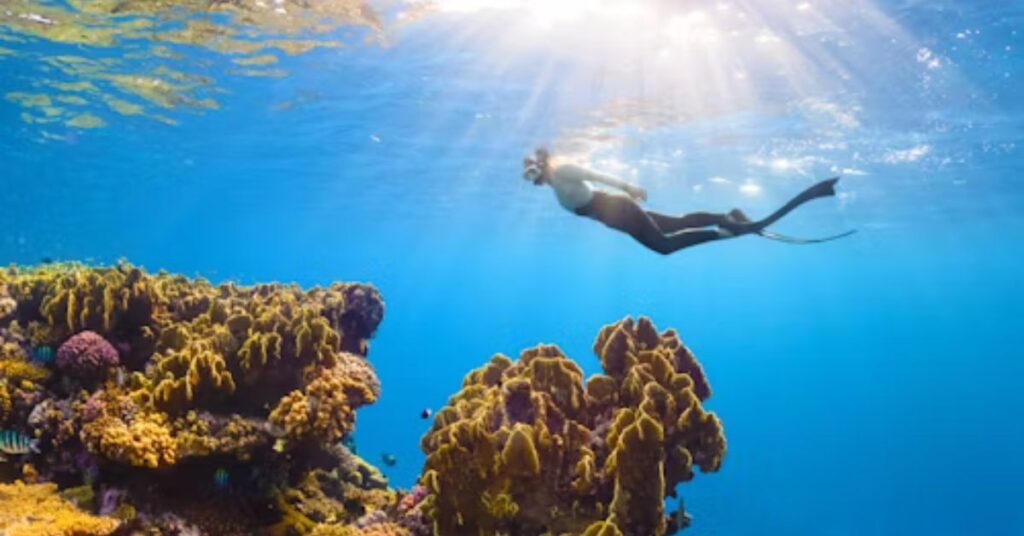
Scuba diving may seem daunting if you’re not confident in the water, but with the right preparation, non-swimmers can absolutely enjoy the experience. Many people have a fear of the unknown when it comes to diving, especially if they’re unfamiliar with swimming techniques. However, with a little planning and practice, even non-swimmers can successfully dive in controlled environments and build up to full certification.
In this section, we’ll guide you through a step-by-step process to prepare for scuba diving as a non-swimmer. By following these tips, you’ll gain confidence, improve your water skills, and be well on your way to exploring the fascinating underwater world!
Step 1: Take Swimming Lessons to Build Confidence
Before diving into scuba, it’s essential to become more comfortable in the water. If you have no swimming experience, your first step should be to take swimming lessons. Even a few lessons can significantly improve your ability to stay calm in the water, which is critical for both safety and enjoyment.
Where to Start:
- Private Swimming Lessons: If you prefer personalized attention, consider one-on-one lessons with a certified swimming instructor. This will help you progress faster and address your unique concerns.
- Group Classes: Group classes are often more affordable and a great way to meet other beginners. You’ll be able to learn in a supportive, social environment.
- Water Confidence Training: For those with a fear of water, many instructors offer “water confidence” programs that focus on making you feel more at ease in the pool. This might involve gradually getting comfortable with floating, breathing, and moving in the water.
Skills to Focus On:
- Floating and Buoyancy: You don’t need to be a master swimmer, but you should learn how to float and stay buoyant in deep water.
- Breathing Techniques: Learning to breathe slowly and deeply through your nose or a snorkel will help you stay calm and make you more comfortable with the breathing apparatus used in scuba diving.
Step 2: Consider a Discover Scuba Diving Course
Once you’re more comfortable in the water, consider enrolling in a Discover Scuba Diving (DSD) program. This is an introductory experience designed for beginners and non-swimmers who want to experience diving in a controlled environment, without the commitment of a full certification course.
What to Expect from Discover Scuba Diving:
- Shallow Water Dives: Discover Scuba Diving courses are typically conducted in shallow, calm waters, such as a pool or shallow lagoon. The depth usually doesn’t exceed 12 meters (40 feet), allowing you to focus on learning basic diving skills without the added pressure of deep water.
- Instructor Supervision: You will dive under the direct supervision of a certified diving instructor. They will guide you every step of the way, teaching you how to use your gear, manage your buoyancy, and breathe properly.
- No Swimming Skills Required: This experience doesn’t require you to be a strong swimmer. The primary goal is to introduce you to the world of diving and build water confidence. You’ll get the chance to practice the basics, such as equalizing ear pressure, using the scuba regulator, and exploring the underwater environment while staying close to your instructor.
Step 3: Build Confidence in the Water with Practice
Before jumping into a full diving experience, it’s essential to practice your water skills regularly. Building confidence in the water will help you stay calm and relaxed when it’s time for your first dive.
Practice in a Pool:
- Controlled Environment: Start by practicing in a shallow pool. This controlled environment offers a safe space to get used to the feeling of being submerged and learning to control your buoyancy with a BCD (buoyancy control device).
- Breathing Exercises: Take time to practice slow, deep breathing both with and without the regulator. This helps you get used to the breathing technique you’ll need while diving and keeps you relaxed.
Work on Buoyancy Control:
- Neutral Buoyancy: In scuba diving, staying neutrally buoyant is key. It means you neither float to the surface nor sink to the bottom. Practice floating in the water without touching the pool floor or the edges, as this will simulate the neutral buoyancy you need to control during actual dives.
- Weight Management: Learn how to adjust your buoyancy with a BCD. This involves adding or removing air from your BCD to control your position in the water, keeping you comfortable and stable.
Step 4: Learn About Diving Equipment
One of the most important aspects of preparing for scuba diving as a non-swimmer is understanding how the equipment works. This knowledge will give you the confidence to use the gear properly and reduce any anxiety about the unknown.
Familiarize Yourself with Key Equipment:
- Mask and Snorkel: You’ll use a diving mask and snorkel to help you breathe at the surface. Practice breathing through the snorkel and getting used to wearing a mask in the pool.
- Fins: Fins help you move efficiently through the water. Get comfortable wearing fins and practice swimming short distances in the pool. If you’re not confident in your swimming strokes, don’t worry—fins will help you glide through the water with less effort.
- Buoyancy Control Device (BCD): This device is used to regulate your buoyancy and keep you afloat. It’s essential to understand how to inflate and deflate it to maintain neutral buoyancy while underwater.
- Regulator: This piece of equipment allows you to breathe while underwater. Practice breathing through the regulator in a shallow pool so you’re familiar with the process before you dive in deeper waters.
Step 5: Understand Diving Safety and Emergency Procedures
Safety is paramount in scuba diving, and as a non-swimmer, it’s crucial to understand basic safety procedures before you dive.
Key Safety Tips:
- Always Dive with a Buddy: Whether you’re diving in open water or a pool, never dive alone. Diving with a buddy ensures that you have immediate support in case of emergencies.
- Stay Calm and Breathe Slowly: Panic is one of the leading causes of diving accidents. Always remember to stay calm, breathe slowly and deeply, and rely on your instructor or dive buddy for assistance.
- Learn to Equalize Your Ears: As you descend and ascend, the pressure in your ears will change. Learning how to equalize (by gently blowing through your nose while pinching your nostrils) is vital for avoiding discomfort or injury.
- Understand Your Limits: Don’t push yourself too hard. Always dive within your comfort zone and experience level. Stick to shallow dives and avoid diving in strong currents until you’ve gained more experience.
Step 6: Take the Plunge – Dive with Confidence!
Once you’ve built water confidence, practiced your swimming skills, and completed a Discover Scuba Diving program, you’re ready to take your first open water dive under the supervision of a certified instructor. Remember, every diver starts somewhere, and diving is a skill that improves with practice.
Diving Safety for Beginners: Essential Tips
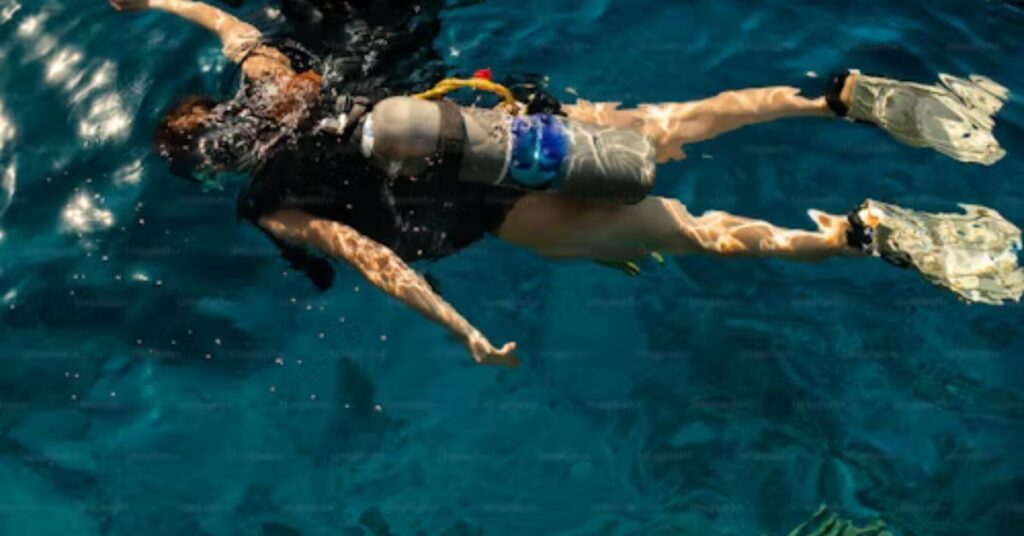
Safety is the most important aspect of scuba diving, especially for beginners. Scuba diving opens up an incredible world of underwater exploration, but it also comes with specific risks that require careful attention and preparation. As a new diver, ensuring you have a solid understanding of diving safety can make all the difference in having a safe and enjoyable experience.
Whether you’re preparing for your first dive or have already completed a few dives, following essential safety tips will help you navigate the underwater world with confidence. Below, we’ve compiled key safety tips that all beginner divers should remember to ensure a safe diving experience.
1. Never Dive Alone – Always Dive with a Buddy
One of the core safety principles in scuba diving is the buddy system. Diving with a buddy is a fundamental safety practice that ensures you have immediate help in case something goes wrong. Whether you’re in shallow or deep water, having a diving partner can significantly reduce the risks involved in scuba diving.
Buddy System Benefits:
- Mutual Support: Your buddy can assist with equipment issues, help you stay calm in case of panic, or assist with emergencies.
- Safety Checks: Before every dive, you and your buddy should perform a thorough safety check on each other’s gear, ensuring everything is functioning correctly.
- Increased Awareness: Diving with a buddy means you both keep an eye on each other’s well-being, including air supply and buoyancy, helping to catch problems early.
2. Stay Calm and Breathe Slowly – Control Your Breathing
One of the most important safety techniques in diving is to stay calm and control your breathing. Panic underwater can lead to rapid breathing, which increases the risk of running low on air and decreases your ability to think clearly in emergencies.
Breathing Tips:
- Slow, Deep Breaths: Focus on taking long, slow, deep breaths to stay calm and conserve air. Inhale and exhale gently, without rushing your breaths.
- Inhale through Your Nose, Exhale through Your Mouth: This technique helps you breathe in a controlled manner and reduces the chance of hyperventilation.
- Remain Relaxed: If you feel nervous or anxious, try to focus on your breathing and relax your body. The more relaxed you are, the better your air consumption and overall comfort in the water will be.
3. Practice Equalization – Prevent Ear Discomfort
As you descend underwater, the pressure increases, which can lead to discomfort in your ears and sinuses. Equalizing is the process of adjusting the pressure in your ears to match the pressure around you. Failure to equalize properly can lead to painful ear injuries, so it’s essential to master this skill.
How to Equalize:
- Pinch Your Nose and Blow Gently: This is the most common method for equalizing. Pinch your nostrils shut, and gently blow air through your nose to equalize the pressure in your ears.
- Equalize Frequently: Equalize your ears regularly, especially during your descent. Don’t wait until you feel discomfort; equalizing early can help prevent pressure buildup.
- Avoid Descending Too Quickly: Descend slowly and steadily to allow your body to adjust to the changing pressure without strain.
4. Monitor Your Air Supply – Don’t Wait Until You’re Low on Air
One of the most critical aspects of diving safety is keeping track of your air supply. Running out of air is a dangerous situation that can quickly escalate, especially if you’re deep underwater. To avoid this, it’s essential to stay aware of your air levels and plan your dives accordingly.
Air Supply Tips:
- Check Your Air Regularly: Frequently check your air gauge to ensure you have plenty of air for the remainder of the dive. You should never wait until your tank is almost empty to start thinking about returning to the surface.
- Establish an Air Supply Reserve: As a rule of thumb, always leave at least one-third of your air in your tank for your ascent and safety stop.
- Use the Buddy System: Always check your buddy’s air supply as well. If one diver is low on air, the buddy can assist with the ascent.
5. Know Your Limits – Don’t Push Yourself Too Hard
Diving can be an overwhelming experience for beginners, especially when you’re navigating the equipment and underwater environment. It’s essential to know your limits, both in terms of your physical condition and your comfort level in the water.
Tips for Staying Within Your Limits:
- Limit Dive Depth and Duration: As a beginner, avoid going too deep or staying underwater for extended periods. Stick to shallow dives (typically no more than 18 meters or 60 feet) until you gain more experience.
- Stay in Calm, Clear Water: If possible, choose dive sites with calm conditions and good visibility. Strong currents, cold water, or murky visibility can make diving more challenging and risky for beginners.
- Don’t Rush to Certification: If you’re nervous or unsure, don’t feel pressured to move on to more advanced certifications too quickly. Build your skills gradually, and ensure you’re comfortable with each step.
6. Understand the Importance of a Safety Stop
A safety stop is a brief pause at around 5 meters (15 feet) for 3-5 minutes at the end of your dive. It’s essential for allowing nitrogen absorbed during the dive to safely leave your body, reducing the risk of decompression sickness (also known as “the bends”).
Safety Stop Tips:
- Make it Part of Every Dive: Even for shallow dives, always include a safety stop in your routine to ensure safe off-gassing of nitrogen.
- Monitor Your Time and Depth: Keep track of your dive time and depth throughout the dive. Make sure to have a buddy or an instructor guide you through the safety stop to ensure it’s done correctly.
- Remain Calm During the Stop: Use the safety stop as a moment to relax, clear your mask if necessary, and double-check your air supply before ascending to the surface.
7. Avoid Diving When You’re Unwell or Under the Influence
Your physical health plays a critical role in diving safety. If you’re feeling unwell, fatigued, or under the influence of alcohol or medication, avoid diving.
Health Considerations:
- Hydrate Well: Dehydration can impair your body’s ability to handle the stresses of diving. Drink plenty of water before and after your dive.
- Avoid Alcohol: Alcohol can impair judgment and reaction times, and it can increase the risk of diving accidents.
- Rest and Recover: Don’t dive if you’re feeling fatigued, stressed, or sick. Listen to your body and give yourself the proper time to recover.
8. Use the Right Equipment – Familiarize Yourself with Your Gear
Understanding how your scuba diving equipment works is crucial for your safety. The more comfortable and familiar you are with your gear, the less likely you are to make mistakes underwater.
Tips for Using Your Gear:
- Get a Proper Fit: Make sure your mask, fins, and BCD fit well. Ill-fitting gear can cause discomfort and potentially hazardous situations underwater.
- Regular Equipment Checks: Always inspect your equipment before diving. Check for any leaks, damages, or signs of wear that could compromise your safety.
- Learn How to Use the Regulator: Ensure you know how to use your regulator (the device that delivers air) and practice proper breathing techniques.
Scuba Diving Lessons for Non-Swimmers: What to Expect
Scuba Diving Lessons for Non-Swimmers: What to Expect
If you’re a non-swimmer or feel unsure about your swimming abilities, you might be wondering if you can still enjoy the exciting experience of scuba diving. The good news is that many dive schools and instructors offer tailored scuba lessons for beginners, including non-swimmers. These lessons are specifically designed to help you build the necessary skills, boost your confidence in the water, and prepare you for diving in a controlled environment.
In this section, we’ll walk you through what to expect from scuba diving lessons for non-swimmers, from basic training in the pool to your first open-water experience.
1. Introduction to Scuba Diving – Understanding the Basics
The first thing you’ll experience in scuba diving lessons is an introduction to the world of scuba. The goal of this introductory session is to help you understand the fundamental principles of scuba diving, including safety, equipment, and techniques.
What You’ll Learn:
- Diving Equipment: You’ll be introduced to the essential scuba diving gear, including the mask, fins, snorkel, regulator, buoyancy control device (BCD), and wetsuit. You’ll learn how to properly wear and use each piece of equipment, which is vital for your comfort and safety while diving.
- The Diving Environment: You’ll get familiar with the underwater environment and how it differs from being on the surface. Your instructor will explain key concepts such as buoyancy (the ability to float), equalization (adjusting ear pressure), and air management.
- Basic Safety Protocols: Before stepping into the water, you’ll learn basic safety rules, including hand signals, how to communicate underwater, and how to deal with potential emergencies like running low on air.
2. Confined Water Training – Getting Comfortable in the Pool
After the theoretical lesson, the next step is confined water training. This part of the lesson takes place in a pool, which offers a controlled environment where you can practice scuba techniques safely. The pool training is crucial, as it allows you to get comfortable with your diving equipment and practice basic skills without the pressure of being in open water.
What You’ll Do in the Pool:
- Breathing Through the Regulator: One of the first skills you’ll practice is breathing through a scuba regulator. At first, it might feel strange to breathe underwater, but with practice, you’ll become comfortable with it. Your instructor will guide you through breathing exercises to help you stay calm.
- Floating and Buoyancy Control: Learning how to stay neutrally buoyant (floating in place) is a fundamental skill for divers. In the pool, you’ll practice adjusting the air in your BCD to achieve the right buoyancy. This ensures you can move effortlessly through the water without rising to the surface or sinking.
- Equalizing Ear Pressure: Equalization is necessary to prevent ear discomfort while descending. You’ll practice techniques like pinching your nose and blowing gently to balance the pressure in your ears, which is critical for any future dive.
- Basic Water Skills: Although you don’t need to be a great swimmer, you’ll practice basic water movements like floating, treading water, and swimming short distances with fins. These skills will build your confidence in the water and prepare you for open water dives.
Instructor Support:
Throughout your pool sessions, your instructor will be by your side, offering constant supervision and guidance. They’ll help you feel more at ease in the water, answer any questions, and ensure you’re practicing each skill safely. If you’re nervous or struggle with any skills, your instructor will provide reassurance and support, helping you progress at your own pace.
3. Pool to Open Water Transition – Moving to the Ocean or Lake
Once you’ve completed confined water training and mastered basic skills in the pool, you’ll move on to open water training. This stage typically occurs in a shallow, calm environment, such as a lake, lagoon, or sheltered beach, where you can practice in real-world conditions.
What You’ll Experience:
- Depth and Buoyancy Adjustments: The open water setting allows you to practice buoyancy control at greater depths (typically 3-5 meters or 10-15 feet). You’ll be able to test your skills in slightly deeper water, which gives you a better sense of how to manage buoyancy in varying depths.
- Clearer Visibility: Open water usually offers better visibility, allowing you to get used to navigating with the gear and being aware of your surroundings. The instructor will guide you through the process of staying aware of your position and checking your equipment.
- Simulated Real-World Conditions: You’ll begin practicing basic dive skills, such as clearing your mask underwater, using your regulator, and managing your air supply while submerged. The instructor will guide you through these skills while you become familiar with the sensation of being underwater.
At this stage, instructors closely monitor your progress to ensure that you’re gaining the skills needed to dive safely. They’ll provide feedback and adjust their instruction based on your comfort level, helping you build your underwater skills gradually.
4. Learning Emergency Procedures – Preparing for the Unexpected
An important part of any diving lesson is learning emergency procedures. While scuba diving is a safe activity when practiced correctly, it’s essential to be prepared for unexpected situations that may arise underwater.
Key Emergency Skills You’ll Learn:
- Clearing a Clogged Regulator: Your instructor will teach you how to clear your regulator if it gets clogged with water. This skill is crucial for ensuring you can continue breathing in the event of an equipment malfunction.
- Sharing Air with Your Buddy: In the event of running low on air, you’ll learn how to safely share air with your dive buddy. This includes practicing controlled ascents and using an alternate air source.
- Ascent and Descent Procedures: Learning how to ascend and descend safely is vital. You’ll practice using your buoyancy control device (BCD) and controlling your descent rate to avoid decompression sickness.
5. Building Confidence – Gradual Progression
Throughout your lessons, your instructor will encourage gradual progress, helping you build confidence and skills step by step. If you’re a non-swimmer, this process will be paced to ensure that you’re comfortable with each skill before moving on to the next level.
Key Confidence-Building Techniques:
- Frequent Practice: As with any skill, frequent practice is essential. You’ll have opportunities to practice and refine your techniques throughout your lessons in both confined and open water settings.
- Positive Reinforcement: Instructors will provide constant positive reinforcement, helping you feel confident and comfortable as you develop new skills.
- Small Group or Private Instruction: Many diving schools offer small group lessons or private instruction to give non-swimmers more individualized attention. This approach allows for a more personalized and supportive learning experience.
6. Certification – Moving to Full Scuba Diving Certification
Once you’ve successfully completed your beginner lessons, which typically include confined water training, open water dives, and emergency procedures, you can move on to earning your certification, such as the PADI Open Water Diver certification.
What to Expect in Certification:
- Written Knowledge Test: After completing your lessons, you’ll take a theoretical test to assess your understanding of the basics of diving, including safety procedures, equipment, and dive planning.
- Final Open Water Dives: Once you pass the written test, you’ll complete a series of final open water dives with your instructor, where you’ll demonstrate the skills you’ve learned throughout the course.
- Certification Card: After successful completion, you’ll receive your scuba diving certification card, which allows you to dive independently with a buddy anywhere in the world, within the limits of your certification level.
Conclusion: Should You Learn to Swim Before Scuba Diving?
Scuba diving is an extraordinary adventure that allows you to explore the depths of oceans, lakes, and reefs in ways few other activities can match. But for those who are non-swimmers, the question remains: Should you learn to swim before scuba diving? While it’s not an absolute requirement for trying scuba diving, learning to swim offers numerous benefits and enhances your overall safety, confidence, and enjoyment when diving.
In this conclusion, we’ll review why learning to swim before scuba diving is a good idea and how it can positively impact your diving experience. Whether you’re a non-swimmer looking to explore the underwater world or someone hesitant about diving due to a lack of swimming skills, let’s break down the advantages and considerations for learning to swim before taking the plunge.
FAQS
Can I get scuba certified without knowing how to swim?
No. Most diving organizations require basic swimming skills for certification.
Can I scuba dive if I have water anxiety?
Yes, but it’s recommended to take swimming lessons and practice water confidence before attempting scuba diving.
What is the easiest way to learn how to swim for scuba diving?
Taking structured swimming lessons and practicing floating and breathing techniques can help build confidence in water.Taking structured
Are there any special programs for non-swimmers who want to try scuba diving?
Yes! Programs like Discover Scuba Diving (PADI) or Try Scuba (SSI) allow non-swimmers to experience scuba in shallow waters under supervision.
How long does it take to become a certified scuba diver?
It typically takes 3-4 days to complete an Open Water Diver course, provided you meet the swimming requirements.

